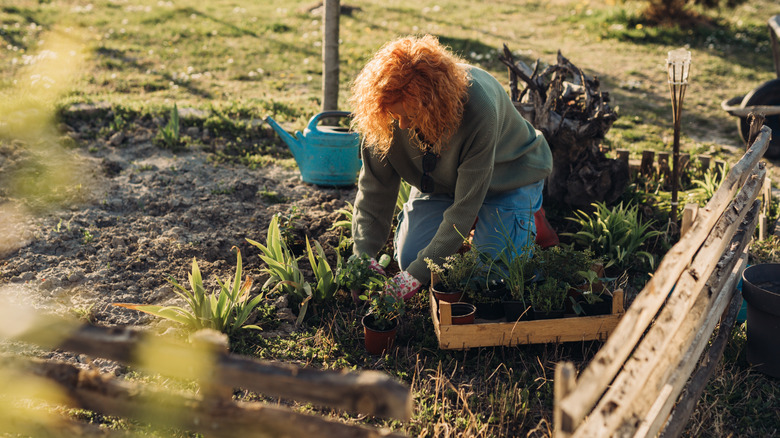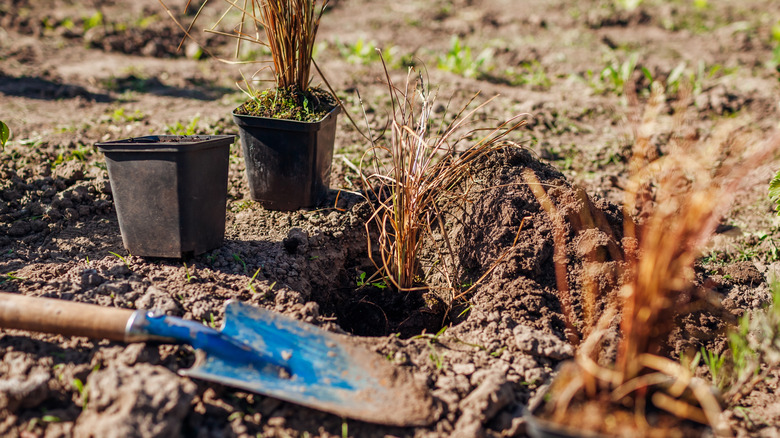The Number One Rule To Follow When Planting Perennials In The Fall
For many of us gardeners, autumn is our favorite time to putter around in the yard. When the weather is crisp and colorful fall foliage rustles in the breeze, it's a joy to be outside — and it's also an excellent time to add hardy plants to our yards. There are lots of perennials you should be planting in October or earlier in the fall, such as cardinal flower (Lobelia cardinalis), Joe-Pye weed (Eutrochium purpureum), and mint (Mentha spp.). You should follow one rule, though: Plant your perennials in autumn four to six weeks before your first average frost date.
Planting perennials should be number one on your fall to-do list for your garden. Because the weather is cooler in autumn, transplanting at this time of year is less stressful for perennials. Adding hardy flowers to your beds when summer is over is also a great strategy for saving money since many nurseries offer plants at reduced rates in autumn. In case you are wondering, adding shrubs and trees to your yard in the fall is also the perfect plan, timing wise. Just make sure, however, to get your perennials in the ground and established four to six weeks before the first hard frost occurs.
How to plant perennials in fall before the first frost
When planting perennials in the fall, your first task should be to remove any weeds that have popped up in your flower beds. Then, you should consider adding some compost to your flower beds to improve your soil. After transplanting, make sure to apply 1 inch of mulch around the perennials to insulate their roots from cold weather and help them settle. The newly transplanted perennials will need to stay hydrated to get established, so as a rule of thumb, provide a weekly watering if rainfall is scarce.
There are some exceptions, however, when it comes to adding new plants in autumn. You should avoid transplanting perennial plants when they are flowering. For autumn bloomers, wait until they are finished flowering, or delay transplanting until the following spring. Some of the best fall-blooming flowers you should consider adding to your yard after their blooms fade include asters (Aster spp.) and goldenrod (Solidago spp.). And while you're working in your garden, you might want to divide existing clumps of hardy flowers or foliage specimens, since four to six weeks before the first frost is also the very best time to divide perennials in fall.

